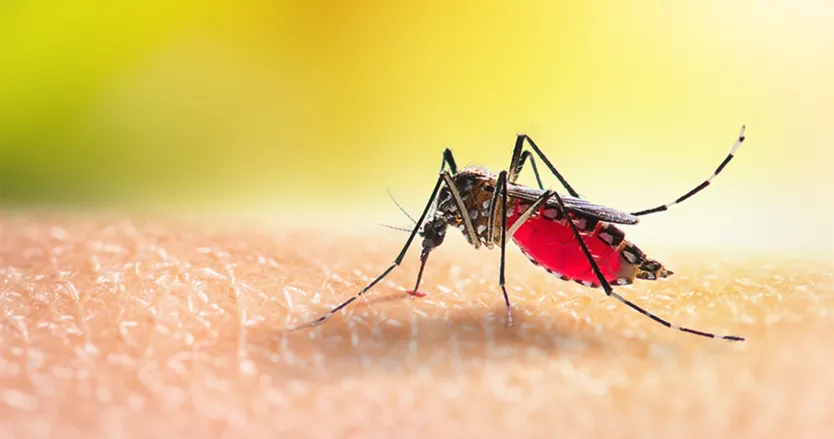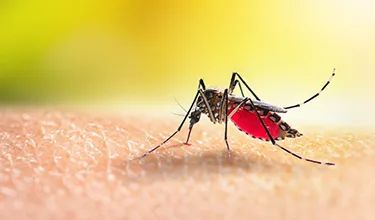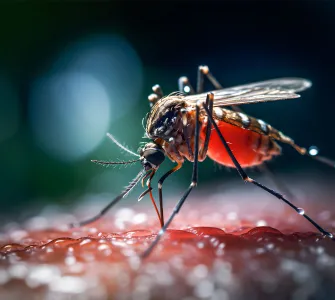The origin and history of the dengue virus

A dance between mosquitoes and primates
Scientists believe that the dengue viruses affecting people today evolved from viruses transmitted between mosquitoes and primates in Africa and Asia.1
Early human encounters
The chronicles of dengue-like symptoms in humans date back to a Chinese encyclopedia published between 265-420 AD, offering glimpses into its possible early presence.2 Epidemics of dengue-like illnesses left their mark on the pages of history, with reports emerging from the French West Indies and Panama during the 17th century.2
Break-bone fever emerges
In the 18th century, dengue earned the moniker 'break-bone fever’ because of the intense muscle and joint pain that can be associated with it.3 Tracing back the history of dengue is complex, but it was probably in the 19th century that the disease came to be known as dengue.4 Epidemics occurred across several countries including Peru, Brazil, the southern United States, and the Caribbean.5
The 20th Century march
Dengue continued to spread in the 20th century.4 Until 1940, there was generally a long interval (of about 10-40 years) between epidemics – that pattern changed though, possibly with the impact of the Second World War (WWII). Dengue spread dramatically, to new regions such as Southeast Asia and the Pacific Islands, due to the movement of troops and war equipment that enabled the transport of the virus and dengue vector (dengue-carrying mosquitoes).4
A broad-scale campaign by the Pan American Health Organization (PAHO) to eliminate the dengue vector (Aedes mosquitoes) resulted in the absence of the disease for 20 years. However, dengue then reemerged, as in 1964 an epidemic occurred with the disease being re-introduced in the Pacific Islands.4
Dengue in the 20th and 21st century
Before 1970, only nine countries had experienced severe dengue epidemics. Now dengue is in circulation in over 100 countries.6 Globalization, trade, urbanization, travel, inadequate domestic water supplies and warming temperatures are all thought to be helping dengue-carrying mosquitoes spread.7
In 2019, the World Health Organization reported a staggering 5.2 million cases – with 300-400 million infections occurring a year (though this could be an underestimate due to underreporting).6 Meanwhile, dengue continues to script its narrative, a tale intricately woven through time and across continents.
References
Wang, E. et al. Journal of Virology. 2020;74(7):3227-3234. Available at: https://journals.asm.org/doi/epub/10.1128/JVI.74.7.3227-3234.2000. Accessed January 2024.
Gubler DJ. Clin Microbiol Rev. 1998;11(3):480-96. Available at: https://www.ncbi.nlm.nih.gov/pmc/articles/PMC88892/. Accessed January 2024.
Morens, DM. et al. Ecohealth. 2013;10(1):104-6. Available at: https://link.springer.com/article/10.1007/s10393-013-0825-7. Accessed January 2024.
Silva, NM. et al. Trop Med Infect Dis. 2020;5(4):150. Available at: https://www.mdpi.com/2414-6366/5/4/150. Accessed January 2024.
Dick, OB. et al. Am J Trop Med Hyg. 2012;87(4):584–593. Available at: https://www.ncbi.nlm.nih.gov/pmc/articles/PMC3516305/. Accessed March 2022.
World Health Organization. Dengue and severe dengue. Available at: https://www.who.int/news-room/fact-sheets/detail/dengue-and-severe-dengue. Accessed January 2024.
Ebi, KL. Nealon, J. Environ Res. 2016;151:115-123. Available at: https://www.sciencedirect.com/science/article/pii/S0013935116303127. Accessed January 2024.





























